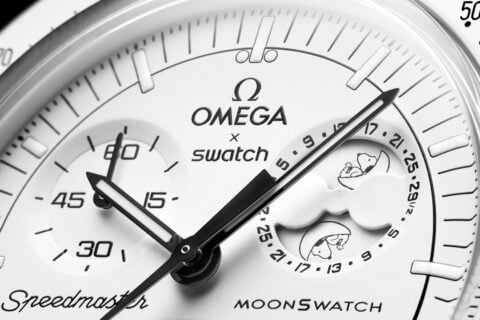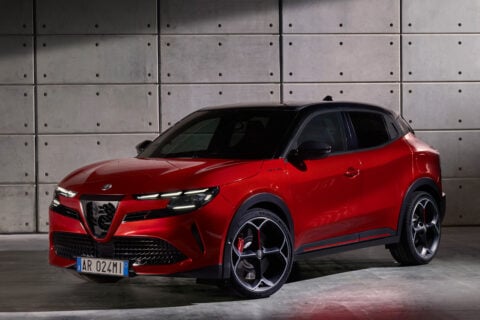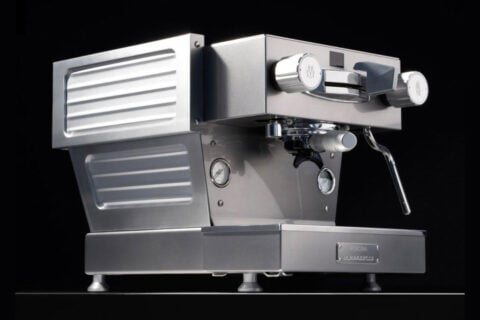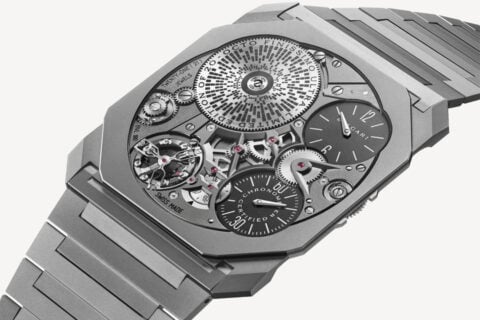Ferrari’s 2018 challenger, the SF71-H, refines the primary repackaging direction that energised last season’s strong F1 Championship run. For 2018, it’s all about drag reduction and optimising each system for greater consistency at every circuit.
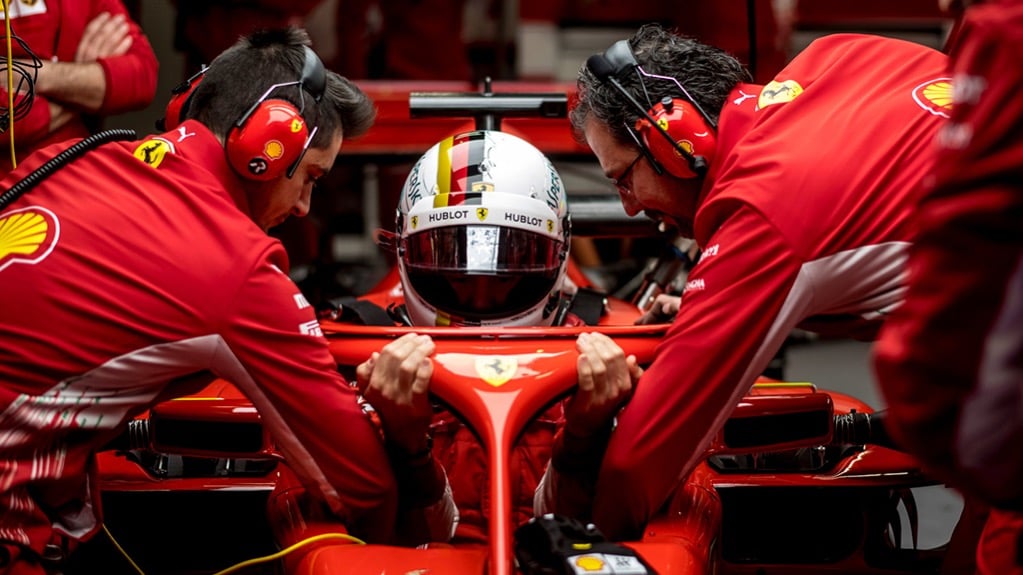
Ferrari’s SF70-H energetically bolted out of the blocks in 2017, surprising pundits in pre-season testing by exhibiting adjustability, grip and pace on every grade of Pirelli tyre across all speed ranges, making it the most influential design of recent years. Unfortunately, Mercedes made up ground quickly, despite having a car that seemed to have only a tiny window of perfection. As the season progressed, Mercedes had the best setup at high-speed circuits while Ferrari usually dominated low-speed layouts.
For 2018, the new SF71-H represents an evolution of Ferrari’s inspired 2017 packaging philosophies but also looks to aggressively increase aerodynamic gains for higher speed circuits for more predictable and reliable performance everywhere.
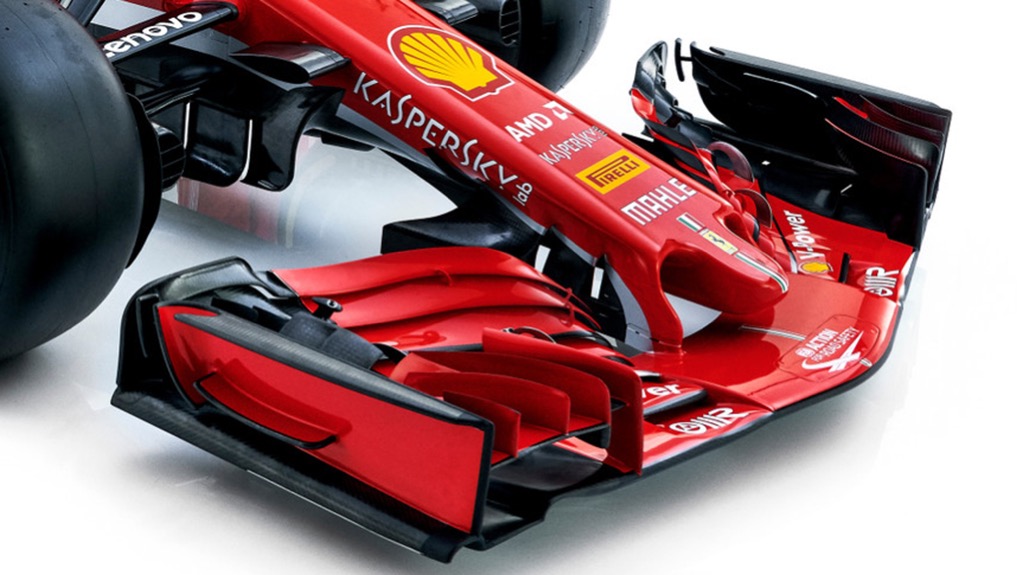
Ferrari technical director Mattia Binotto drew attention, via a translator at the launch of the new SF71-H, to the car’s longer wheelbase, the evolution of its now very narrow bodywork and side pods and slimmer rear-end packaging.
At first glance, the noticeably longer wheelbase allows the engineers to be freer when it comes to sculpting the aero elements located in the middle of the car that vector the airflow between the rear of the front tyres and the collection of aero elements in front of the side pod’s leading edge. The reward is more consistent grip that reduces chassis nervousness in the faster corners and an increase of quality mass airflow that reaches the rear of the car.
It also looks as if the SF71-H is sporting a little more rake (higher rear ride height) on the car, which also increases the volume of the air (and thus the available downforce) beneath the car’s underfloor.
The side pods are noticeably narrower than 2017 with smaller twin radiator inlets mounted very high on each side of the chassis. One is traditionally forward facing, while its partner faces partly skyward, from the top leading edge surface of the side pod, shaped to capture airflow vectored by car’s cleverly sculpted mirrors.
Binotto explained, ”As regards to aerodynamics, we tried to retain our concept of the inlets for the radiators, and everybody is copying that, but we tried to make an additional step forward. What we showed today is not the same element as last year — it is something more developed”.
The undercut section of the side pod blends into the chassis side nicely, separating the airflow into what cools the power unit and what is required to produce downforce while reducing aerodynamic drag.

The Ferrari SF71-H again demonstrates inspired packaging from the front wing positioning to the last turning vane on the top corner of the side pod working together to steer the airflow to the leading edge of the underfloor. The front wing assembly remains a multi-element design with six elements separated by slot gaps adjustable to set pitch sensitivity. The front wing mounting pillars are three-dimensional with two vertical slot gaps that pull more airflow between the base of the nose and the FIA-defined central wing section
This airflow is ducted through the S-duct to the top of the chassis, reducing turbulence and increasing the mass of air flowing underneath the car. The flow exiting the top S-duct reduces aero-lift on the upper part of the nose and chassis, keeping the front wing’s management of the air consistent.
Ferrari’s aero engineers will have spent unbelievable hours finding the best balance of flow and routing of the collection of aero elements in front of the side pods as this profiling contributes more than 20 percent to the overall SF71-H downforce and most importantly sets up greater rewards as the better managed airflow reaches the diffuser.
The three-element vertical turning vane below the driver’s feet picks up the airflow underneath the raised section of the chassis and sets up a turning moment to sweep it outwards for further vectoring by the bargeboards.
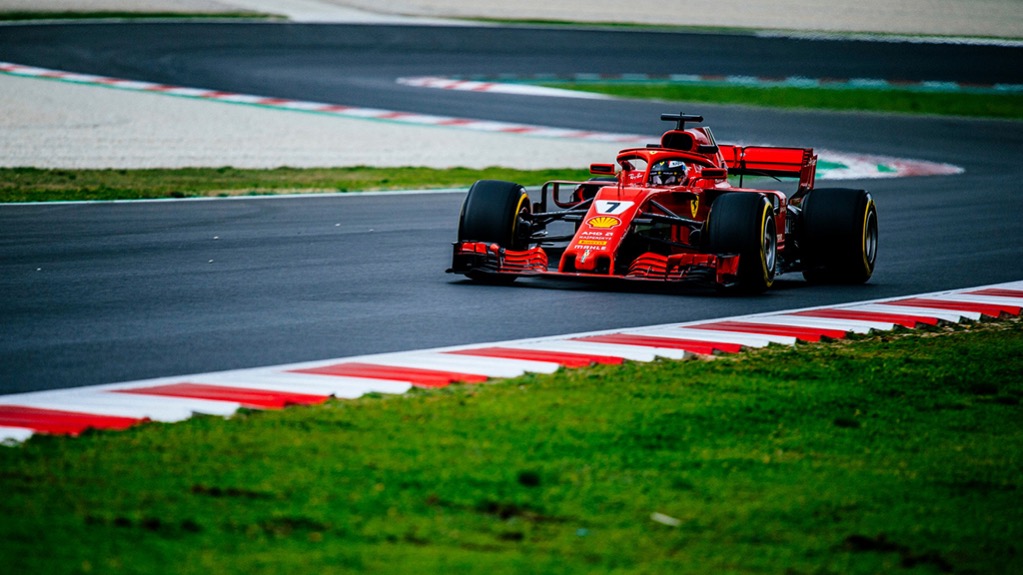
The Ferrari’s bargeboards are mounted very far forward, each a single-element component that separates into three elements at the top edge. They exist as the final adjustment tool, refining the airflow for the leading edge of the underfloor. Their freshened design looks to better establish a robust, controlled, and consistent stream of air that enters the underfloor sector and flows unhindered to the diffuser’s exit.
You’ll find one more aero aid of note on what’s sure to be the season’s most controversial element, the Halo. An aero flap on the halo’s top surface, very similar to both the Sauber and the Toro Rosso, aims to minimise the turbulent air entering the airbox that feeds the power unit turbocharger, thus reducing the energy spent producing boost.
Binotto believes the combination of all these aspects will “sharpen the spear”, and these focused improvements of the Ferrari’s aerodynamic efficiency will give the SF71-H its share of victories.
“When it comes to performance, these are all contributions that aim to improve the aerodynamics of the car. They try to improve the drag level in general while increasing the overall efficiency of the racecar.
“These have all been architectural and layout actions aimed at one final objective: that of improving aerodynamics, or at least opening more avenues for aerodynamic performance during the season.”
“The strengths are there, and we wanted to improve ourselves.”


